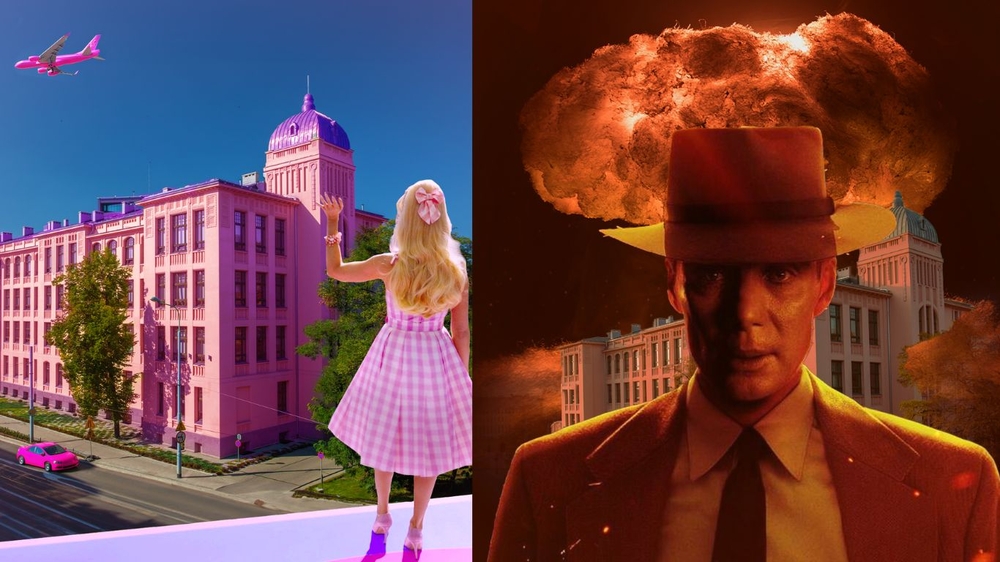Creator of nuclear weapons, or perhaps a spy? Who was Julius Robert Oppenheimer?
The future "father of atomic bomb" Julius Robert Oppenheimer received a thorough education. He obtained his Bachelor’s degree in Chemistry from the prestigious Harvard University and then explored experimental physics under the tutelage of the Nobel Prize winner John J. Thomson at Cambridge. However, theoretical physics turned out to be Oppenheimer's destiny, so he moved to the University of Göttingen. After obtaining the PhD degree (1927), he took a job at the University of California, Berkley.
There, he befriended Ernest Lawrence, who created a centre for nuclear physics at the university. Thanks to this collaboration, Oppenheimer took part in the Manhattan Project – a secret US government programme to develop nuclear weapons. However, Oppenheimer had no experience in experimental work, was laughed at for not knowing the equipment, not knowing how to operate it and not knowing how to lead a team. He was perceived as a man with his head in the clouds, unconcerned with his superficiality, the main attributes of which were his worn-out shoes, a pipe and a hat. Nevertheless, despite all this, Gen. Leslie Groves, chose him to coordinate the Los Alamos research in 1942. Three years later, the first, successful, nuclear test was carried out.
In the same year, the US decided to use the new technology against Japan. The dropping of the "Little Boy" atomic bomb on Hiroshima (6 August 1945) satisfied Oppenheimer as a scientist. After the attack on Nagasaki (9 August), when he was already aware of the magnitude of the consequences of the use of nuclear weapons, he gave up further participation in the project and became an ardent supporter of international control over the new weapons. With such an attitude, he offended American politicians, even President Harry Truman. Their argument was obvious: The Americans were entering a Cold War rivalry with the Soviet Union, and nuclear weapons provided the US with an advantage over its opponent.
After withdrawing from the project, Oppenheimer returned to his role as a university lecturer and, along with other scientist-physicists, lobbied for restrictions on the use and wider dissemination of nuclear weapons. He became a fervent opponent of US research into thermonuclear weapons. "There is only one future of atomic explosives that I can regard with any enthusiasm: that they should never be used in war." – he said explicitly in one of his lectures from 1946 (published in 1955).
In 1954, as a result of the so-called second wave of the 'Red Scare', he was accused of being a communist and of espionage. His pre-war contacts with the Communist Party of the United States of America (which his girlfriend Jean Tatlock and his brother Frank were members of) were no secret – US intelligence knew about them even before he was appointed to the Manhattan Project team. At the time, his loyalty to his homeland was not in question. However, the international situation changed after 1945, as a result of which the Atomic Energy Commission revoked Oppenheimer's security clearance. It was only in December 2022, 55 years after his death, that the administration of the current President Joe Biden reversed the decision, ruling out the possibility of Oppenheimer's anti-American activities.
Text: Dr Magdalena Pogońska-Pol, Department of Polish and World History after 1945, Faculty of Philosophy and History, University of Lodz
Barbie, what is the history of Barbara Millicent Roberts?
Barbie as a Mattel product debuted in the USA in 1959. Lilli doll, which originated in Germany, was said to be the direct, though unofficial, inspiration for the creation of Barbie. Lilli was a reproduction of an exclusive prostitute from German adult prints by Reinhard Beuthien. Her adventures were published in the Hamburg magazine 'Bild Zeitung'. The character from the graphics was seen as a determined, classy, fashionable, awe-inspiring figure, whose appearance some linked to that of Marlene Dietrich. Lilli had no reluctance to talk about sex, fashion, politics. Having bought the rights to the German doll, the first task facing Mattel's owners was therefore to create a Lilli counterpart that would appeal to a completely different consumer group.
Barbie, or Barbara Millicent Roberts, first officially appeared at the American International Toy Fair on 9 March 1959. She was dressed in a one-piece beachwear with black and white stripes. Its dimensions at the time were: 36–20–32. If these proportions were appropriately transferred to real conditions, she would be, and still is, an impossible figure. As a result of protests by organisations fighting anorexia Barbie's waistline gained a few millimetres in the very next decade. The producers explained Barbie's appearance by her nature – she was supposed to be a 'fashion doll', a three-dimensional answer to paper female characters who could be dressed in paper clothes. The dimensions were to be adapted so as to be able to display the clothes in a suitable, miniaturised way. Of course, the controversy was not silenced by this assurance, and the company itself, by releasing another version of the doll, only fuelled it. We are talking about the 1965 Barbie, which came with a bathroom scale indicating a score of 50 kg and a booklet with a weight-loss recipe on the cover with a slogan "don't eat".
Text: Dr Aleksandra Krupa-Ławrynowicz i Dr Alicja Piotrowska, Institute of Ethnology and Cultural Anthropology, University of Lodz
Edit: Ronald Wójcik (Faculty of Philosophy and History, University of Lodz)

